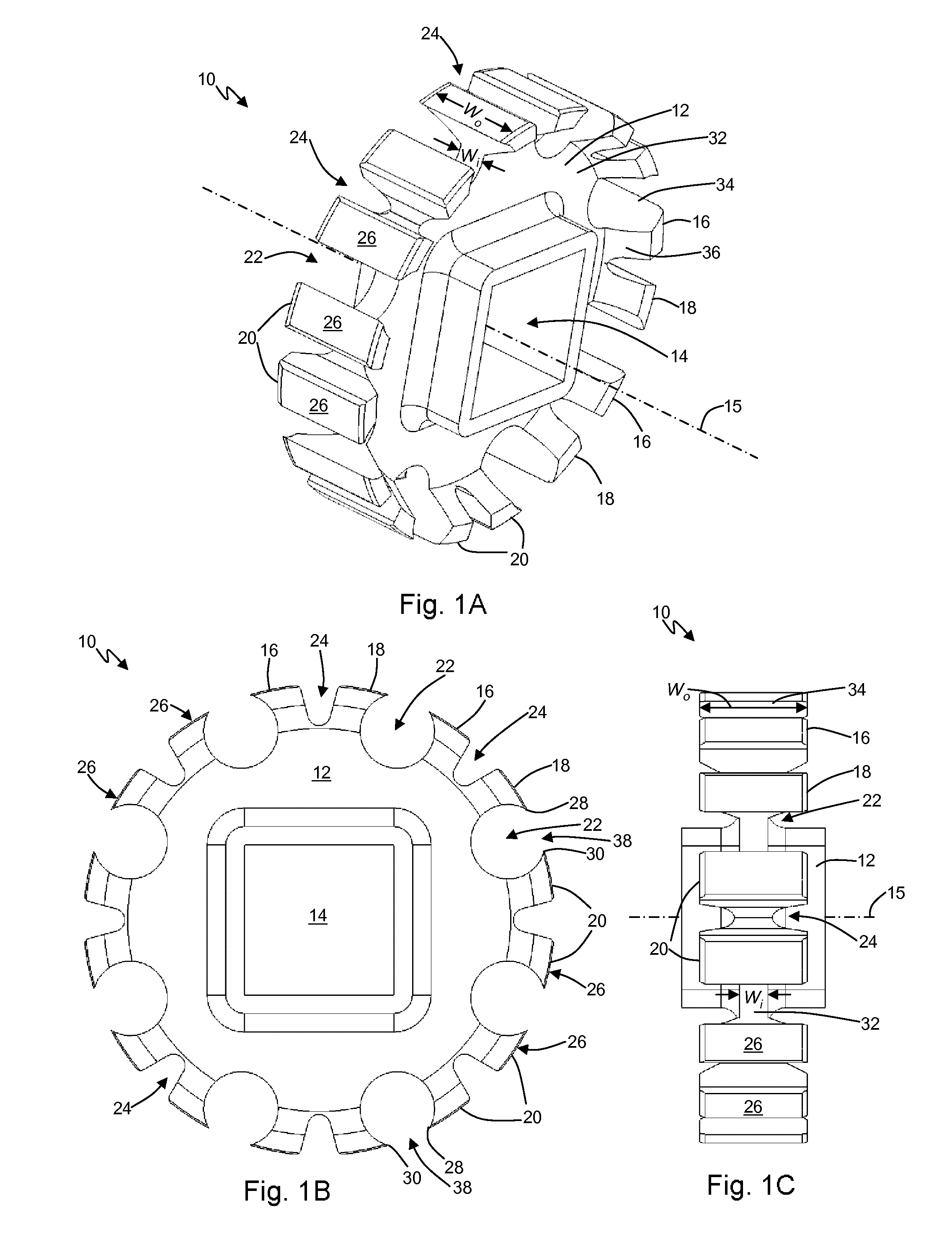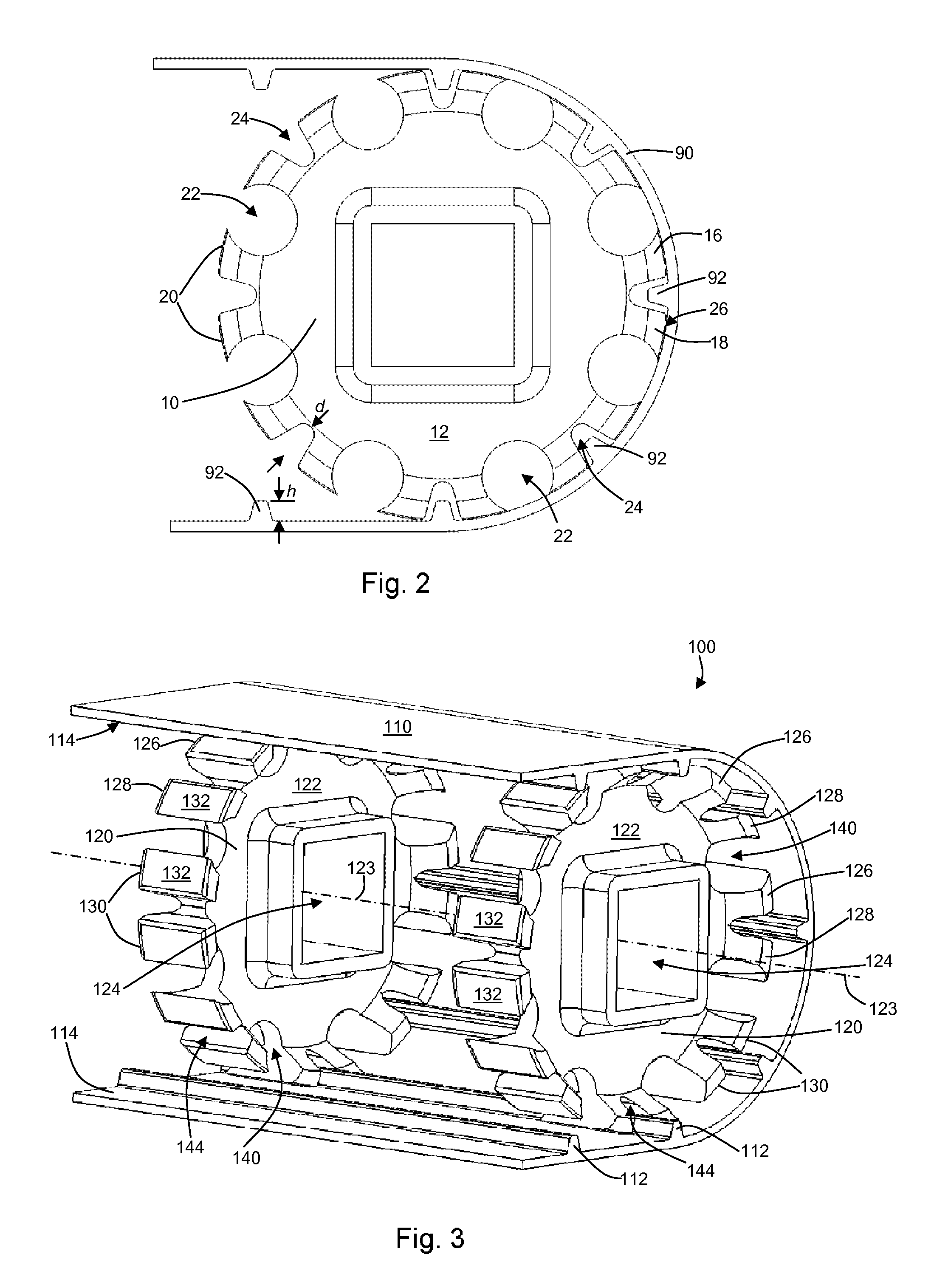Sprockets for a flexible conveyor belt and conveyor belt system
a flexible conveyor belt and conveyor belt technology, applied in the direction of conveyors, transportation and packaging, etc., can solve the problems of not being ideally suited to use with flexible (non-modular) belts, the sprocket as described above suffers, and the sprocket of fig. 7a is not ideally suited to flexible (non-modular) belts. to achieve the effect of reducing the ability of the belt to buckl
- Summary
- Abstract
- Description
- Claims
- Application Information
AI Technical Summary
Benefits of technology
Problems solved by technology
Method used
Image
Examples
Embodiment Construction
[0028]Initially, it should be noted that the terms “belt,”“conveyor,”“conveyor belt,” and “flexible belt” are used interchangeably herein to refer to any non-modular belt as is known in the art. Such a belt may be constructed from fabrics coated by plastics or rubber, coated plastic sheets, monolithic plastic sheets, or other non-modular belt configurations. The terms may be used herein to refer to belts for any application, such as, for example, conveyor belts and process belts.
[0029]FIGS. 1A-1C depict a sprocket 10 according to an embodiment of the present invention. The sprocket 10 comprises a body 12 which may be constructed from stainless steel, plastic, or other suitable materials generally known to be food compatible and easily cleanable. The sprocket 10 includes a central opening 14 for engaging a shaft (not shown). The shaft may be a drive shaft. The central opening 14 may be shaped to cause the sprocket 10 to rotate as the shaft is rotated; for example, the central opening...
PUM
 Login to View More
Login to View More Abstract
Description
Claims
Application Information
 Login to View More
Login to View More - R&D
- Intellectual Property
- Life Sciences
- Materials
- Tech Scout
- Unparalleled Data Quality
- Higher Quality Content
- 60% Fewer Hallucinations
Browse by: Latest US Patents, China's latest patents, Technical Efficacy Thesaurus, Application Domain, Technology Topic, Popular Technical Reports.
© 2025 PatSnap. All rights reserved.Legal|Privacy policy|Modern Slavery Act Transparency Statement|Sitemap|About US| Contact US: help@patsnap.com



